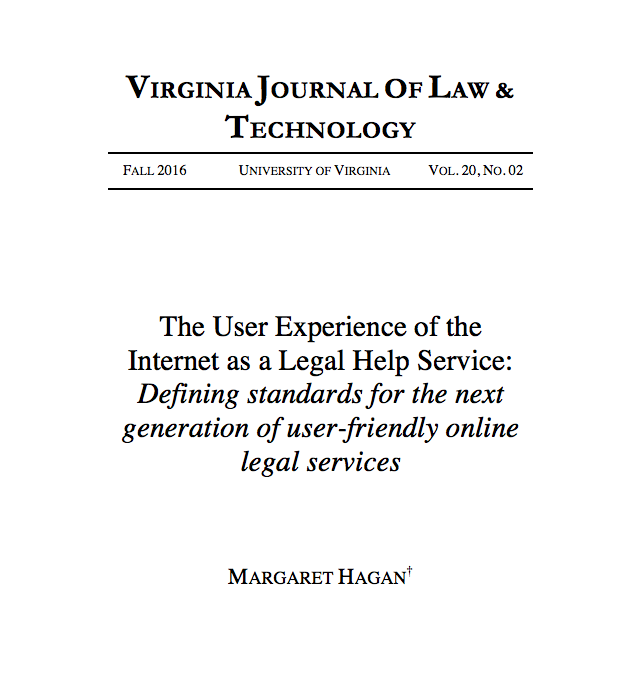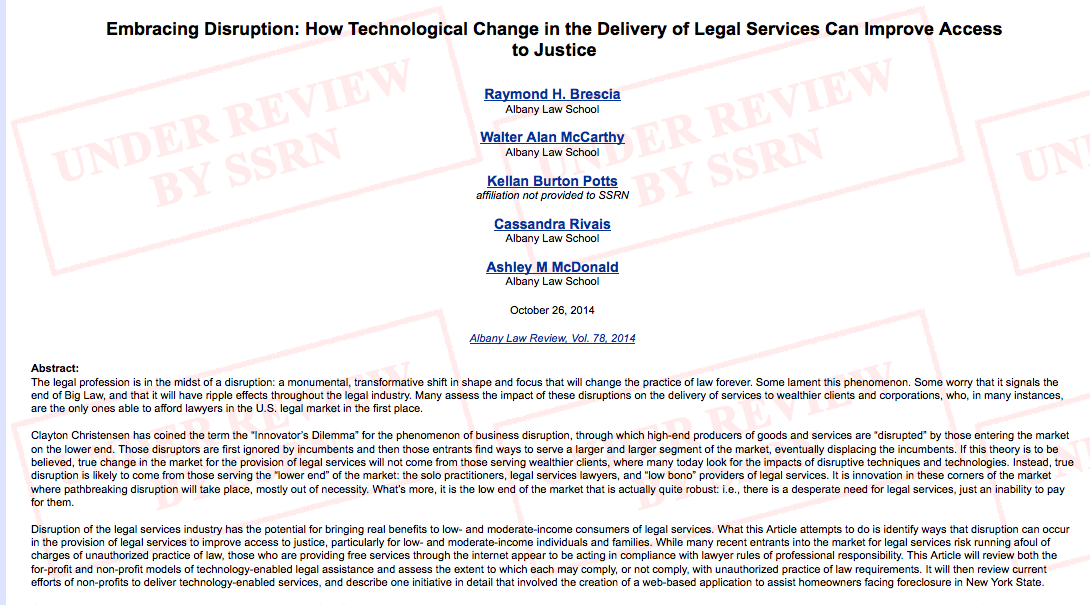One of my academic articles has just been published in the Virginia Journal of Law and Technology. It’s called “The User Experience of the Internet as a Legal Help Service.” The article presents findings from my research into how people experience the Internet when they try to use it to solve legal problems.
As more people turn to Google searches to figure out what the law says, and what to do, about a problem they’re facing, we need to be thinking about how to make sites that are more trustworthy, more user-friendly, and more supportive. We also need to make the Internet search results more so as well.
This article summarizes the findings that have been the bedrock for the Better Internet for Legal Help project at Legal Design Lab, in which we’re working to remaking how legal help content
The abstract of the paper is as follows, follow the link for the full article!
This Article presents empirical research about how the Internet is currently failing laypeople who are searching online for legal help to their life problems and what a future agenda of user-centered standards and practices for better legal help on the Internet could be.
It first examines the existing literature about how the Internet can best be used as legal resource and the status quo of legal help sites.
Then it surveys and examines negative consumer reports and reviews of legal help websites.
Finally, it presents the first study of how laypeople search for resources to resolve a legal issue, how they scout and assess legal help services online, and their feedback on which existing legal help sites they consider to be the most usable, the most trustworthy, and the most valuable.
This data is useful to propose new best practices about how these tech-based services can best serve laypeople, in terms of usability, quality of service, and protection of the users’ interests. It also confirms the importance of the Internet as a legal help service and highlights the need for more research and development on better online legal help sites that fit laypeople’s needs and preferences.



